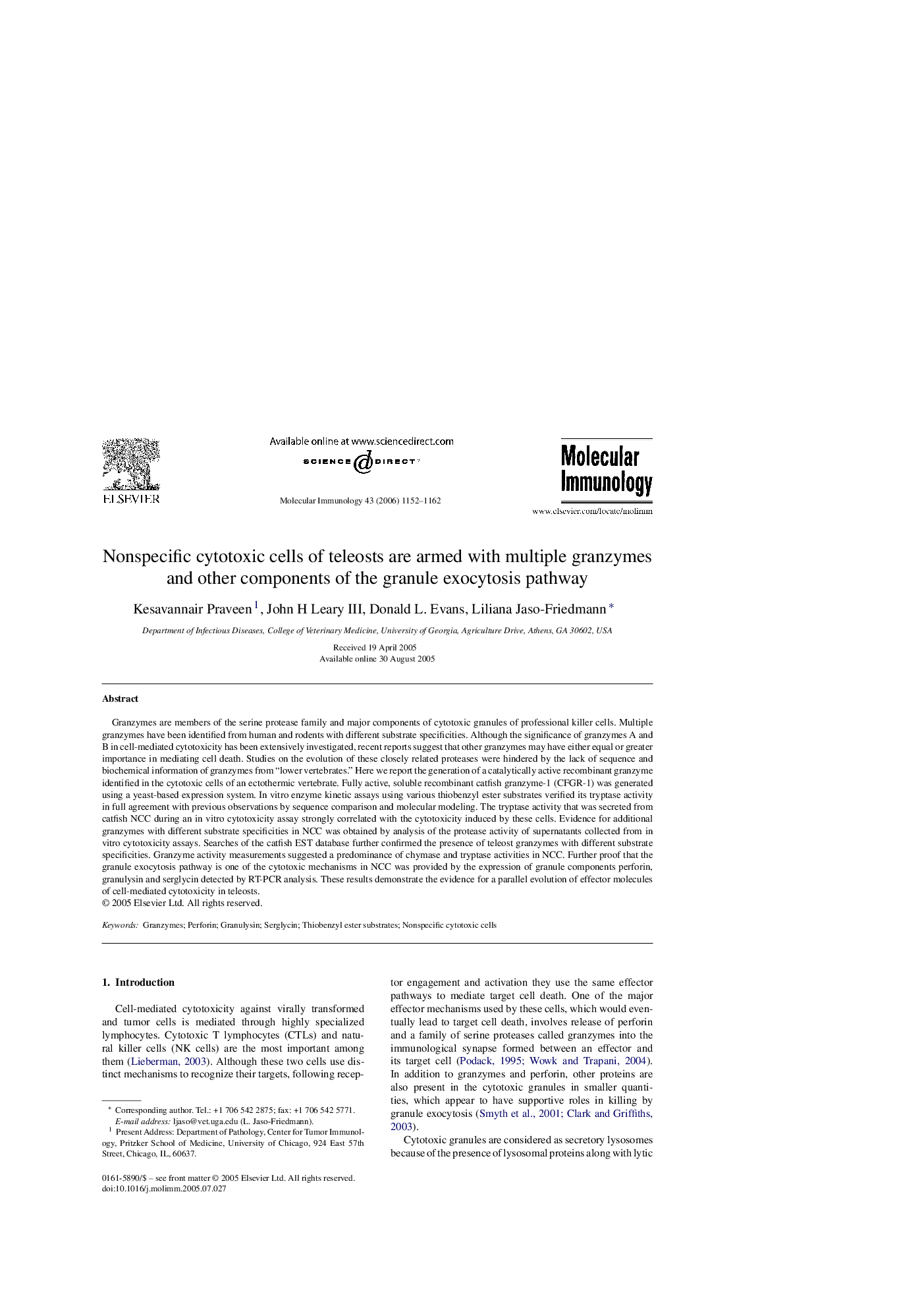| Article ID | Journal | Published Year | Pages | File Type |
|---|---|---|---|---|
| 2833042 | Molecular Immunology | 2006 | 11 Pages |
Granzymes are members of the serine protease family and major components of cytotoxic granules of professional killer cells. Multiple granzymes have been identified from human and rodents with different substrate specificities. Although the significance of granzymes A and B in cell-mediated cytotoxicity has been extensively investigated, recent reports suggest that other granzymes may have either equal or greater importance in mediating cell death. Studies on the evolution of these closely related proteases were hindered by the lack of sequence and biochemical information of granzymes from “lower vertebrates.” Here we report the generation of a catalytically active recombinant granzyme identified in the cytotoxic cells of an ectothermic vertebrate. Fully active, soluble recombinant catfish granzyme-1 (CFGR-1) was generated using a yeast-based expression system. In vitro enzyme kinetic assays using various thiobenzyl ester substrates verified its tryptase activity in full agreement with previous observations by sequence comparison and molecular modeling. The tryptase activity that was secreted from catfish NCC during an in vitro cytotoxicity assay strongly correlated with the cytotoxicity induced by these cells. Evidence for additional granzymes with different substrate specificities in NCC was obtained by analysis of the protease activity of supernatants collected from in vitro cytotoxicity assays. Searches of the catfish EST database further confirmed the presence of teleost granzymes with different substrate specificities. Granzyme activity measurements suggested a predominance of chymase and tryptase activities in NCC. Further proof that the granule exocytosis pathway is one of the cytotoxic mechanisms in NCC was provided by the expression of granule components perforin, granulysin and serglycin detected by RT-PCR analysis. These results demonstrate the evidence for a parallel evolution of effector molecules of cell-mediated cytotoxicity in teleosts.
